
How to Prepare for a Day at the Crag
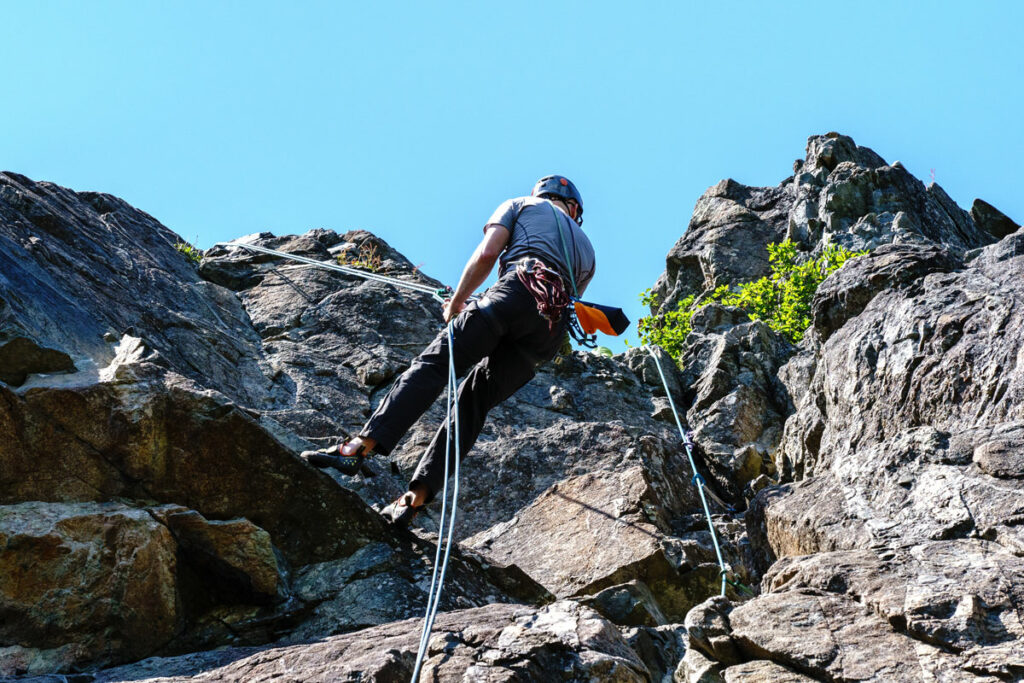
Choose Your Crag
Washington is blessed to have so many climbing areas in close proximity to the Seattle metro area. Vantage, Index, the Exits, Leavenworth and Mt. Erie are some, just to name a few. A few friends and I had taken a leading traditional climbing course the week prior and wanted to practice our new skillset. We opted to head to Mt. Erie to get on some easier graded climbing to practice these skills. Often in the shoulder season, we will go to Vantage to climb when it’s dry and sunny and still wet in Western Washington. If we are getting in some quick climbing after work, the Exits are nice and close by to squeeze in some climbing. Washington is a rock climbers dream.
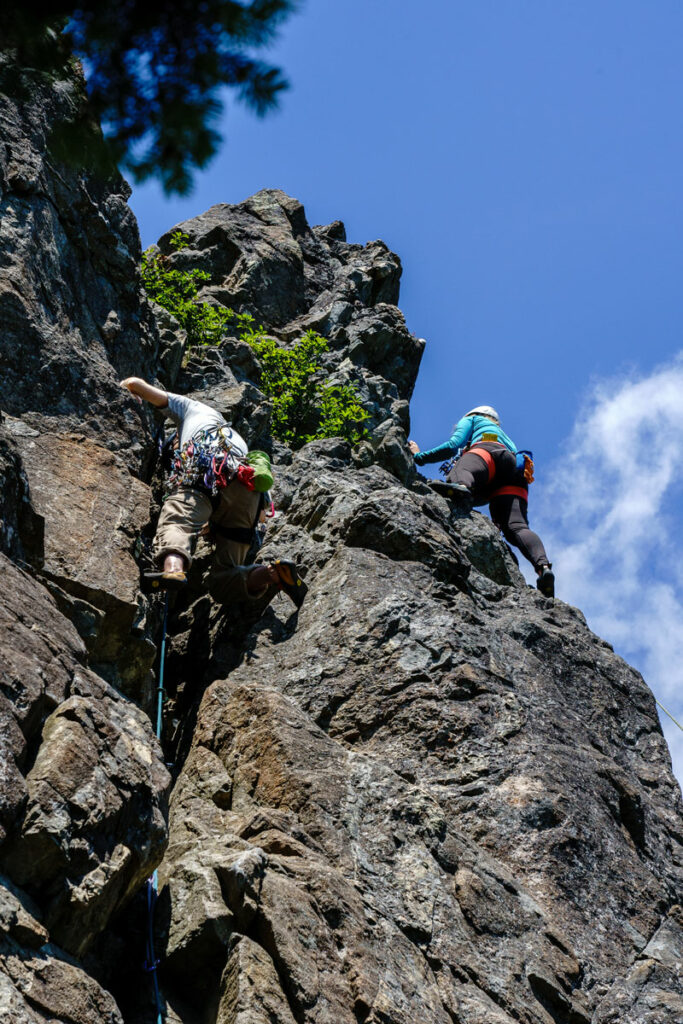
Scope out Routes
The first thing I did after we chose the place was to scope out some routes via Mountain Project because I did not have a guide book for this specific area. I own a few guide books for specific areas, but they do get expensive and are really good for the places we return to a lot. Try to find used copies of these online if you are trying to save money. Alternatively, using the website Mountain Project, you can search where you want to climb, what kind of climbing you want to do (traditional, sport, top rope or bouldering), and the level of the grade you are looking to climb. I was very happy to see an abundance of easier graded climbing in this area. I also like to scope out routes that are rated higher than others to find the super fun ones.
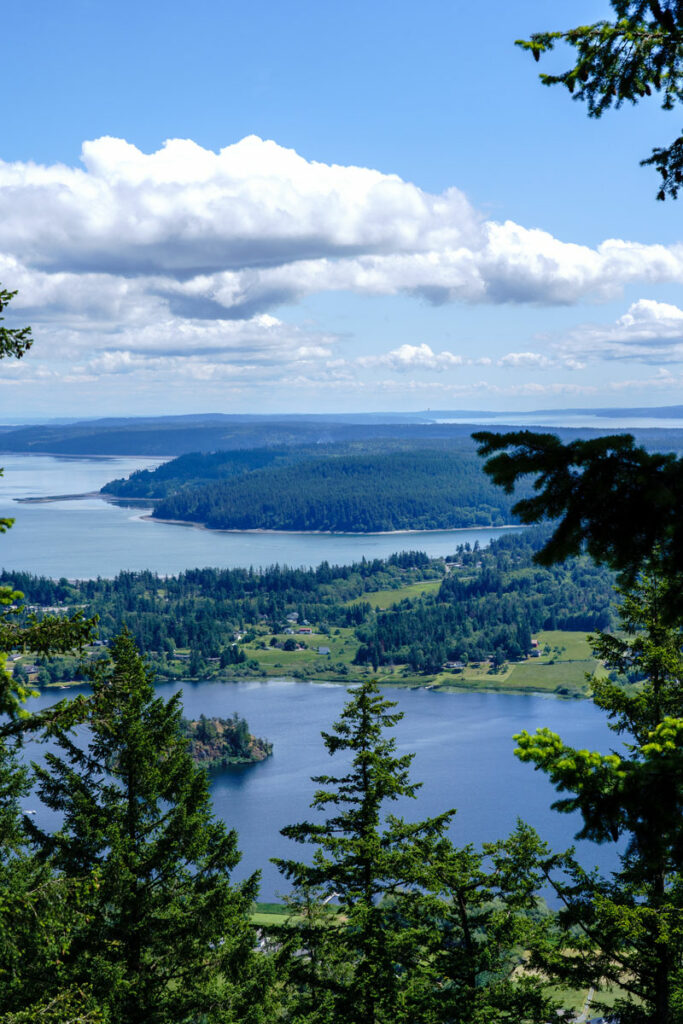
Getting There
Make sure to research ahead of time the right parking pass needed for wherever you are going. Many in Washington will need a Discover Pass. Getting to the specific crag you are looking for can be a little confusing as there is often a faint boot track that get you to the rock and not often very straightforward trail to follow. If you have guide books, they do a good job of describing how to get to the specific crag you are looking for. If you don’t have this, I would look for tracks to download on your phone if it is your first time, or bring a trusty, knowledgeable friend whose been before and can get you there. Don’t be like me and spend over an hour getting lost trying to find the crag. Come prepared and have a plan!
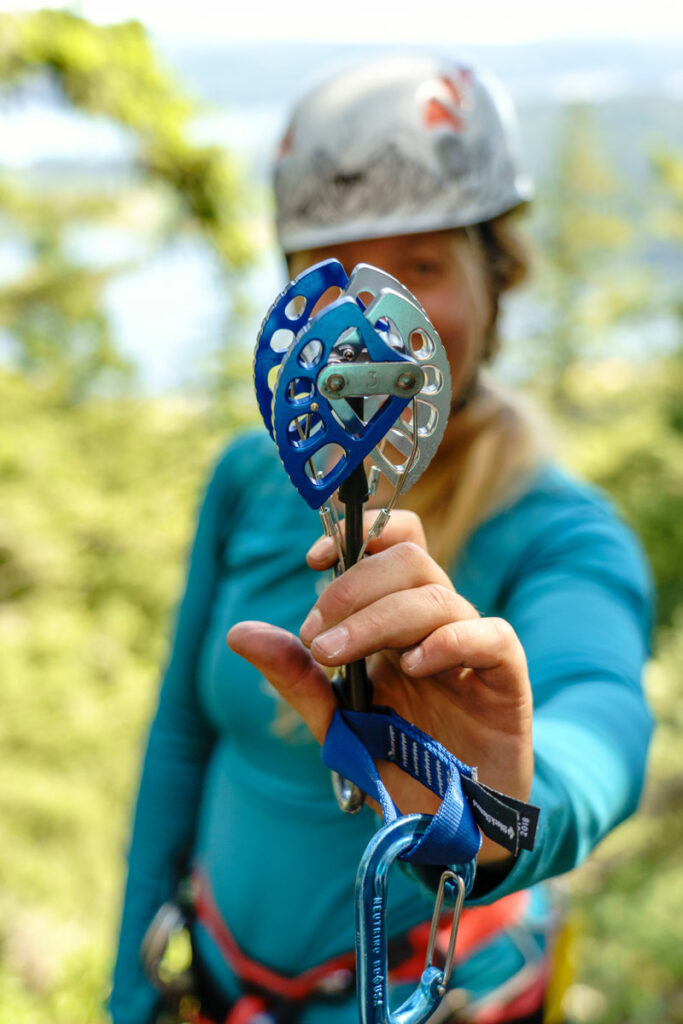
Gear
Climbing requires a bit of gear. If you are a beginner, the bare minimum you would need is a harness, helmet and climbing shoes. If you don’t own these, you can rent any of these items or borrow from a friend. That is how I started and went with friends that had all the other necessary gear. Since then, I have acquired all the things I need to go climbing with a buddy. Besides the items listed above, you would also need sport draws (for sport climbing) or protection pieces for traditional climbing. I also bring a few extra things for anchors, rescue equipment and rappel equipment. Some extra gear and things that aren’t necessary but are nice to have are a foam pad to sit on (crags are extremely rocky!), a camera and delicious snacks to share with friends.
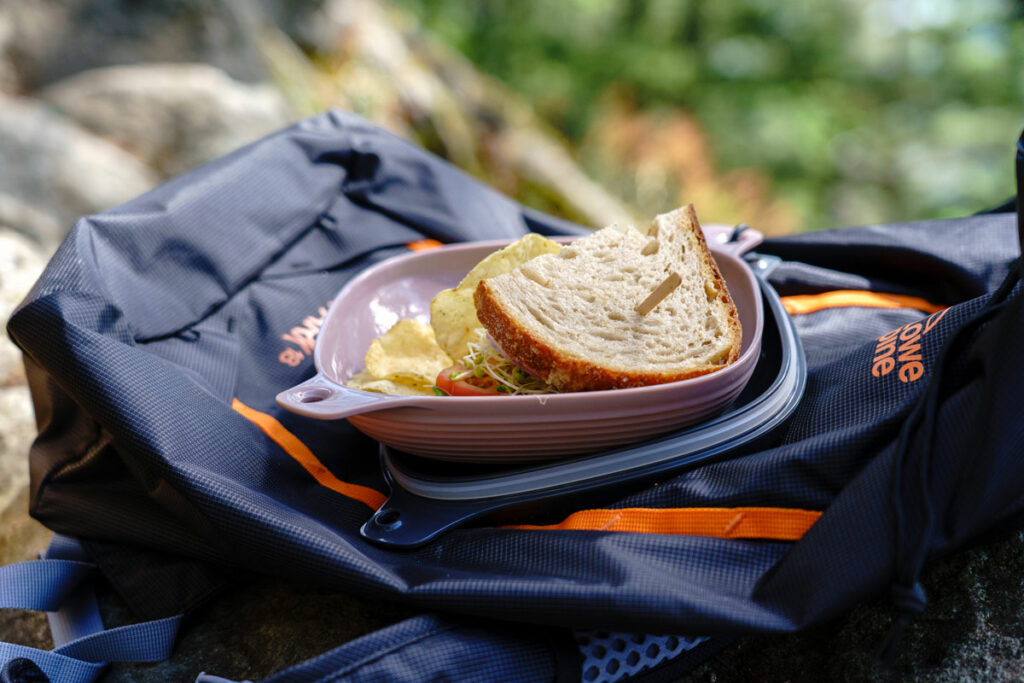
10 Essentials
When you think of the 10 essentials you probably think of hiking. I believe in any outdoor activity that you should come prepared with the 10 essentials. Even though you aren’t hiking out as far for craggin’, you never know what could happen. Accidents can happen in climbing, weather can happen, you can get stuck late climbing and need to hike out in the dark (speaking from experience on that one).
Those items are:
- Navigation: map, compass, altimeter, GPS device, personal locator beacon (PLB) or satellite messenger
- Headlamp: plus extra batteries Head Lamps
- Sun protection: sunglasses, sun-protective clothing, and sunscreen
- First Aid: including foot care and insect repellent (as needed)
- Knife: plus a gear repair kit
- Fire: matches, lighter, tinder and/or stove Matches
- Shelter: carried at all times (can be a light emergency bivy)
- Extra food: Beyond the minimum expectation
- Extra water: Beyond the minimum expectation
- Extra clothes: Beyond the minimum expectation
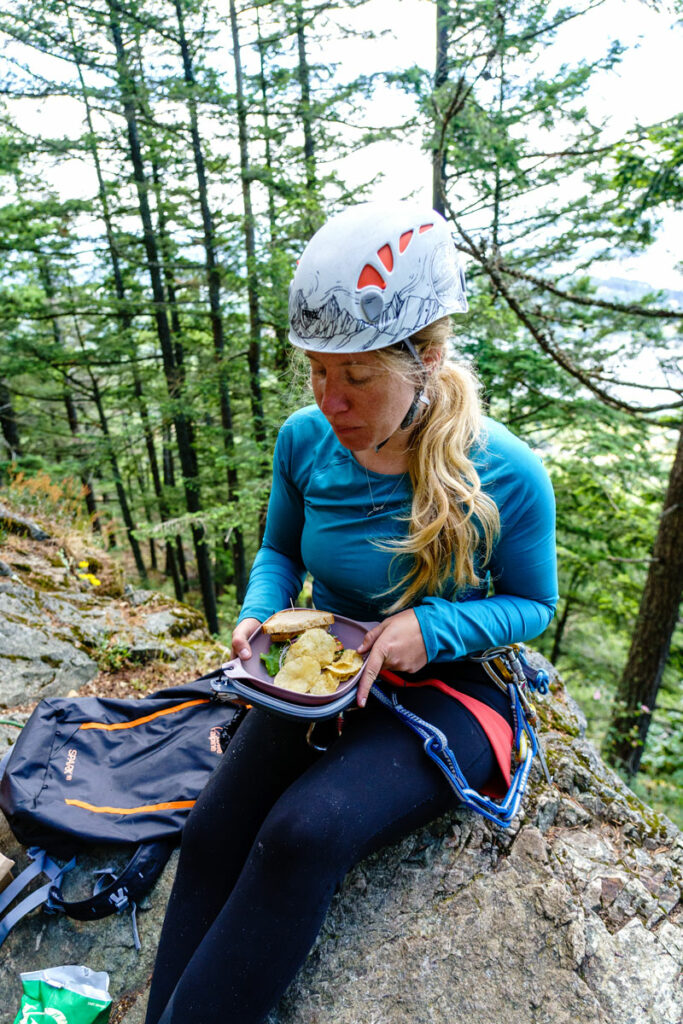
Food
Whatever activity I’m doing outside I like to come prepared with good snacks and meals to get me through the day. The UCO Mess Kits are super handy in helping me prepare and bringing real food. One of my favorite parts of climbing is that you can choose how hard you want to climb and how much you want to relax and snack. I come prepared with a good meal (sandwich or burrito), chips, fruit or veggies and something sweet to share with friends.
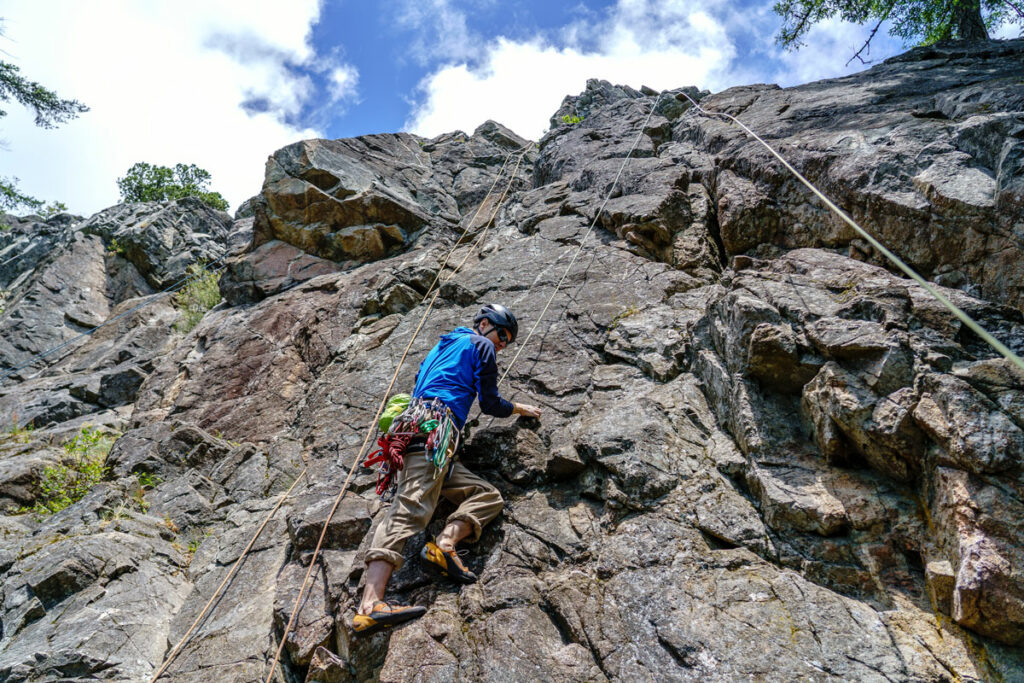
Climb On
Find your crag. Do your gear and safety checks, and then climb on! Don’t forget to be courteous of other climbers around you and communicate about what routes you and they are trying to get on. Sharing is caring. I often make new friends at the crag by chatting it up with those around me. We usually climb for 5-8 hours depending on intensity and time. After that we wrap it up, make sure to Leave No Trace and always grab a post-climb treat on the way home.
ABOUT THE AUTHOR: Sarina Clark

Sarina is an adventure writer and photographer, spending every night she can outside. She is originally from the flatlands of Minnesota, now a transplant to Seattle. Sarina is an advocate for public lands, Leave No Trace, and taking care of our wild places. Sarina hopes to inspire others to connect with their public lands and enjoy the transformative experience it can bring. Sarina explores the land through human-powered adventure whether it be backpacking, mountaineering, climbing or relaxing at an alpine lake with her golden retriever.
Explore Sarina’s Work: http://sarinaclark.com

